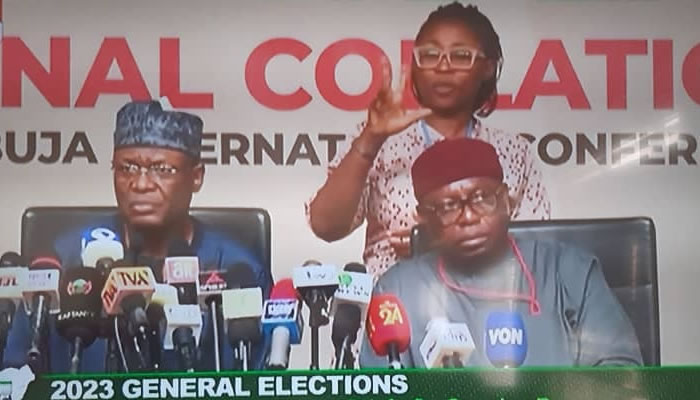Months after claiming that an attempted hack led to the slow upload of the 2023 presidential election result on its election viewing portal (IRev), the Independent National Electoral Commission has said that the issue was caused by an unforeseen configuration issue in integrating the presidential election upload into the system.
INEC, in a 526-page report on the conduct of the 2023 general elections also noted the currency swap issue and fuel scarcity within the period also impacted negatively on the elections.
The commission also said that while the configuration problems experienced at the commencement of result upload were immediately addressed, further delays arose as a result of the Polling Officers either switching off their devices or leaving their locations, making it difficult for their IREV to communicate with the device.
It noted that several results that were scanned earlier before the glitch queued up for upload, making the system slow, thereby delaying some of the uploads till the following day.
INEC also said it suffered over 50 attacks on its buildings and facilities in various LGAs and State Offices across 15 States of the federation leading to losses in terms of vehicles, office equipment and election materials.
The commission also insisted that the 2023 general election remains diverse in terms of representation both at the state and federal levels as more political parties won elections in either the state Assemblies or the National Assembly with four parties- APC, PDP, LP and NNPP winning governorship elections.
The Report, with a foreword by the Commission Chairman, Prof. Mahmood Yakubu read;
“On the 25th of February 2023, the nation held the Presidential and National Assembly Elections. These elections were notable for their peaceful and orderly conduct, marked by the absence of significant instances of violence, with over 25% of registered voters casting their ballots.
“Polls opened on time in most polling stations and were generally smooth and orderly. There were some reports of technical glitches with the BVAS, although these were addressed by the roving technical staff assigned to address such issues. The counting, collation, and declaration of results process were largely peaceful, transparent, and credible nationwide.
“While the former was tailored to serve as the nerve centre for monitoring the conduct of elections across the 774 LGAs nationwide, the latter served as the venue for the National Collation of results emanating from States. Throughout the electoral process, Election Monitoring Support Centres (EMSCs) in every state served as a vital source of field information and intervention.
“The National Situation Room was also set up for the conduct of the Governorship and State Houses of Assembly Elections, held on the 18th March 2023. This time, it was replicated in all 36 states. The Situation rooms both at the national and State level were managed by a team of experts from INEC, the security agencies and other relevant organisations.
“A key challenge that impacted on the public perception of the election and elicited widespread commentary was the failure to upload Polling Unit results of the presidential election to the INEC Result Viewing (IReV) portal in real-time at the close of polls on Saturday 25th February 2023”
“To begin with, it is important to note that the IReV portal is one of the most significant innovations introduced by the Commission prior to the 2023 General Election to promote the integrity and transparency of the electoral process. As a public-facing website, the IReV portal shows the images of the original Polling Unit result sheets as recorded in Form EC8A.
“The operational methodology and the concept behind the upload of results to the IReV for public viewing is quite simple. At the end of polls, Polling Unit results (Form EC8As) are scanned and uploaded to the IReV by the Presiding Officer(s). These results are then available for viewing to the public and all stakeholders.
“The system, which was first deployed during Nasarawa Central State Constituency bye-election in August 2020 and tested in 105 subsequent elections, including three (3) off-cycle governorship elections, has tremendously improved public confidence in the integrity and transparency of the Commission’s result management process.
“The challenge of uploading the PU presidential election results on the IReV after the presidential and NASS elections on 25th February 2023 was unique. As voting ended across the country and POs began the process of uploading the images of the PU result sheets of the elections for the various constituencies around 1 4:00pm, the Commission began to receive reports that attempts to upload presidential 4 election result sheets was failing.”

